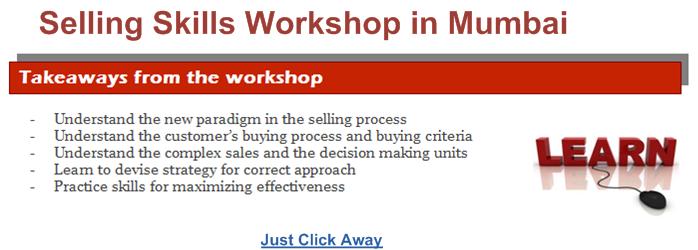Article Written by : Parvez Pestonji (Sales and Management Coach) 
In the changed market dynamics a salesperson needs to facilitate the customer in making a buying decision, which means that the salesperson must adapt his sales approach to his customer’s decision process, and the approach should differ according to the product, market and customers. To be successful, salespersons need a good understanding of the factors that are likely to influence their customers to buy. Of course, successful salespeople know they must adapt their approach to their customer to ensure the customer feels he or she is in control of the decision.

The successful understand that the key is leading their customers to a buying criterion that fits the unique features of their product. The next obvious question is ‘who in the customer’s organization does the salesperson pitch to? For many years it was assumed that one of the keys to selling was to find the M.A.N. In other words, the person who has the money to buy, the authority to make the decision and the needs to be satisfied by your product. The idea was that you qualified each contact you met in an account until you found the M.A.N. Having found the M.A.N., then and only then you would attempt selling.
It is true to say that there are markets or account situations where such an approach is justified; however, such simple sales are very rare. In the majority of sales situations, although there is only one decision maker, others influence the final outcome. Many salespeople have contacted the top person in an organization, the M.A.N., and convinced him or her of the virtues of their product, only to find later that the business was given to a competitive company. Complaining that the contact must be biased not to buy their product will not win future sales. Far better to learn from their mistakes and next time ensure they uncover and sell to the influencers.
Another weakness of the M.A.N. theory is that it is not always possible to see the M.A.N. Company Presidents or Chief Executives, for example, have an annoying habit of passing the responsibility for a purchase to lower managers. You could argue that in such cases the lower manager is the M.A.N., but what happens when the manager returns to the Chief Executive with his decision. How likely is it that the Chief Executive will question the decision and change the manager’s mind? Who is in control of the sale? Not you! One should be very careful when assuming a simple sale with one decision maker. Even when selling to ‘one man business’ influencers may be about. What, about the businessman’s wife, relations, friends, or your competitor? When a sale has more than one person influencing the decision, it is called a complex sale. There has been much research into how salespeople manage complex sales.
In answer to our question, ‘What is selling?’ we have not changed the original definition: selling is persuading or motivating people to buy a product or service profitably. However, we have identified that
(a) Personal selling is part of a much larger process a company has at its disposal to sell its products
(b) Salespeople must be adaptable to changing markets and be aware of the return on their efforts.
(c) There are two sides to selling, one relating to face-to-face influencing skills, the other managing your time and resources to ensure you achieve the best return on your effort.
(d) Your best sales approach is dependent on you, your company, market and product.
(e) An effective sale is when the customer feels they are in control of the buying decision and the decision is made in an environment of trust and
(f) Most sale situations are complex, the buying decision often being influenced by more than one person.
Another important point that needs to be understood is that a salesperson’s persuading skills are applicable only in a face to face situation. Experienced and efficient salespeople are able to maximize their face to face selling time to the tune of roughly a third of the available time during the day. Most sales-people however clock in much less. This means that more than seventy percent of the time available to the salesperson is utilized in other activities or wasted. This data goes to suggest that an organization should focus on the efficiency of the sales force and provide training on selling skills to make sales teams more effective in a face to face situation. In other words the organization should generate the productivity from managing the sales process and improve its profitability by upgrading the skills of the sales teams.
The demand for sales efficiency has caused a greater focus on the sales management process in recent years. The monitoring and review process and the field sales management process is part of what will help managers operate effectively in this side of their job.
In conclusion it can be said that to stay competitive after this slowdown, companies should look at improving the efficiency of their sales operations by installing a scientific and professional sales management process and undertake selling skills training to make the salesperson more effective thereby increasing profitability. There is no appropriate time to act than now.
Article Written by : Parvez Pestonji (Sales and Management Coach) 


